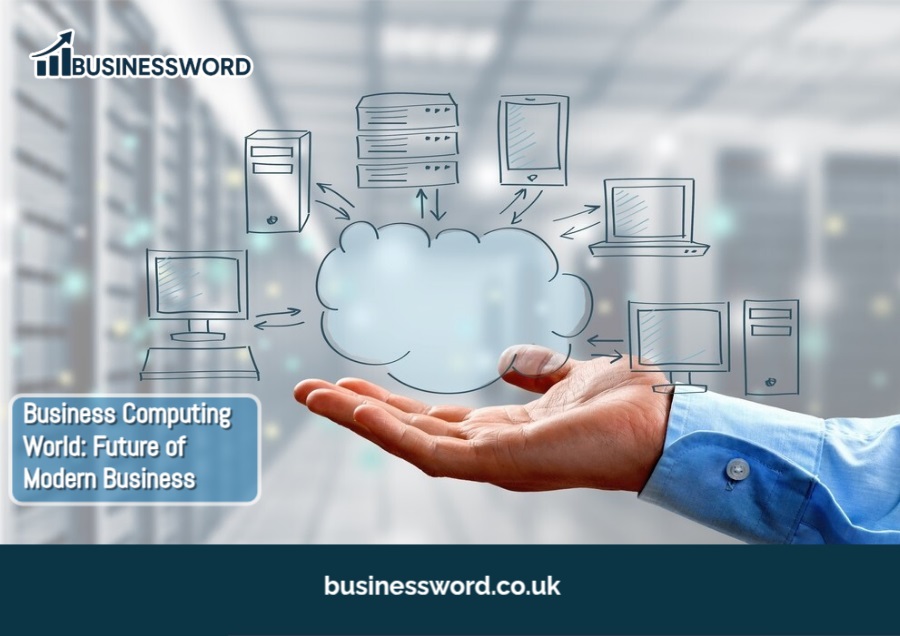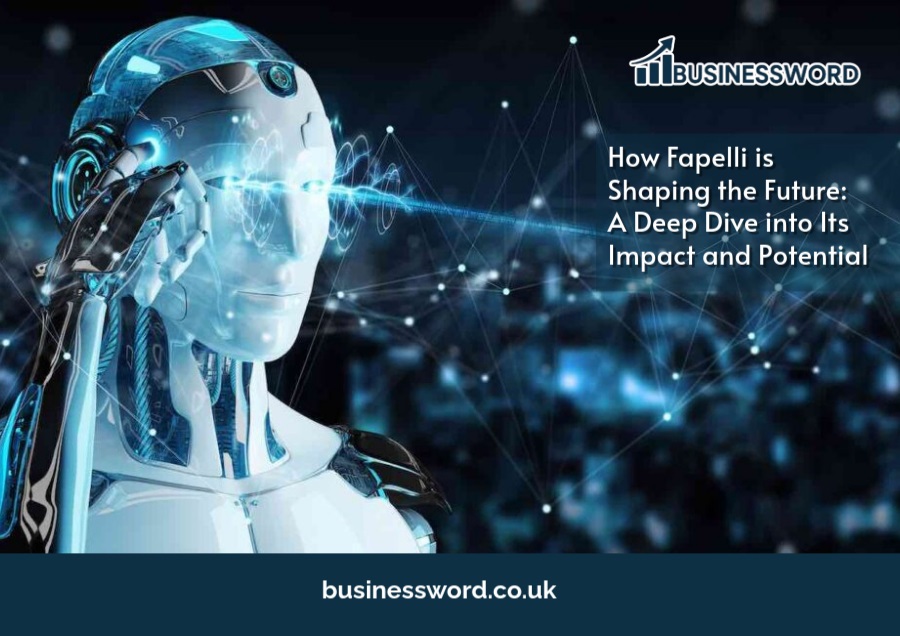As you might have guessed, given digitalization’s fast-paced nature, companies barely survive using traditional methods of competition. Technology varies the corporate structure with a new paradigm of functioning, communication, and expansion. This is the dynamic ecosystem so well known as the Business Computing World, where IT, cloud solutions, AI, and enterprise software harmonize to create smarter and more efficient organizations.
From cloud computing to cybersecurity, from data analytics to automation tools-the Business Computing World propels digital transformation. Therefore, all IT leaders, entrepreneurs, and decision-makers wishing to use information technologies to accomplish success in the corridors of the Business World must be cognizant of what this landscape really is all about.
Historical View on the Evolution of Business Computing
Business computing-enterprises with mainframes and desktop applications-have come a long way. The computer systems were, more or less, good enough for a company to do bookkeeping, payrolls, and filing records. The simplistic systems, however, did lay the foundation for the trend of digital evolution.
Today’s business computing extends to ERP, CRM, big data analytics, AI, and IoT.
This evolution emphasizes an incredibly crucial point: Growth of innovations and advancement is indicating that computing must now be considered the very backbone of keeping modern businesses operational.
For instance, computing indeed powers companies like Amazon and Netflix for providing personalized recommendations, optimizing logistics, and running huge-scale global operations. The success of these multinational giants further establishes that the deep integration of business computing will trade off sustainable competitive advantage.
Components of the Business Computing World
The core framework of business computing today is maintained by certain basic pillars that rule how business today operates:
Cloud computing:
Cloud computing gives businesses an avenue to operate and scale without heavy investments in physical infrastructure for storing data and hosting applications. The models have gained great popularity, and today’s prime Internet-based delivery systems for Software as a Service (SaaS), Infrastructure as a Service (IaaS), and Platform as a Service (PaaS) are mostly dominated by the big players: Amazon Web Services (AWS), Microsoft Azure, and Google Cloud, empowering businesses with agility, flexibility, and cost savings.
Cybersecurity:
With digital data penetrating more and more ends in the universe, threats to its existence are multiplying. Today’s corporate world is under serious threats from the likes of ransomware, phishing scams, etc. Such days are gone when a company considered it enough to have a firewall. Nowadays, it’s practically mandatory to deploy firewall security, encrypt data, and harden access control with Multi-Factor Authentication (MFA) in these very organizations. Training performing awareness in cybersecurity should also be provided to help protect sensitive information and trust from their customers.
Big Data and Analytics:
After all, today’s data is the new oil that will fuel the digital economy. Big-data analytics allows businesses to study large datasets against parameters and draw some actionable insights from them. Such tools include PowerBI, Tableau, and Hadoop. They allow businesses to analyze trends quite graphically and use the findings for optimization on the current performance fronts and predict future results for smarter evidence-based decisions.
Automation and AI:
This is, in fact, rewriting the very definition of every industry. From smart operations in CRM deployments to chatbots and predictive analytics to give future sales trends, Artificial intelligence breathes life into smart business operations. While saving human errors and costs, automation allows human employees to work on higher-level tasks through efficiencies and innovations.
Enterprise Applications:
Enterprise Software Solutions are those that have given way to their name-from the electronic goldmines of ERPs to Human Resources Management systems to CRM systems-in transforming operations of an organization into efficient processes. For instance, with Salesforce and SAP, organizations can manage one customer relation within one platform, another financial processes, and the third supply chain management.
Business Computing and its Advantage for Organizations
The introduction of modern business computing results in several advantages beneficial to organizations and, in most scenarios, productive in promoting growth and competitiveness.
- Efficiency and Productivity: Automation tools and integrated systems reduce manual effort, eliminate duplication, and generally accelerate workflow.
- Scalability: Cloud platforms allow organizations to scale their operations easily and efficiently without any major hardware infusion.
- Collaboration: Tools for remote work, including Microsoft Teams, Zoom, and Slack, allow easy communication all over the world.
- Security: Cybersecurity tools and techniques work to protect business-critical data from breaches and attacks.
- Innovation: Emerging AI and Analytics technologies support businesses in the launch of new products, exploration of new markets, and keeping ahead.
So basically, business computing not only makes organizations efficient but transforms them into intelligent digital enterprises capable of sustaining continuous success.
The Sequential Tutorial on Business Computing Exploitation Within Your Organization
An orderly plan for resource maximization for information technology in the current world of business computing.
Step 1: Determine Business Needs
Start by thinking about the operational pain points you are experiencing: a tedious reporting process, poor visibility into your data, really bad customer conversations, or unwieldy communications. Set out a clear intention: for example, reducing costs, increasing automation, or facilitating better decision-making through the use of analytics.
Step 2: Choose the Purposeful Software
Software must be tied in to concrete activities:
- For communication: Slack, Microsoft Teams, Zoom
- Project management: Asana, Trello, Jira
- Data analytics: Tableau, Power BI, Google Analytics
- CRM/ERP: Salesforce, Oracle, SAP
A good mix of the right tools will define increased operational efficiency.
Phase 3: Cloud Adoption
Move needy businesses to scale and make their critical business processes flexible by shifting to a cloud platform.
Set the stage perhaps with hybrid forms of cloud solutions that allow a bit of legroom in security and convenience before fully embarking on the public cloud platforms such as AWS or Azure.
Phase 4: Cybersecurity Enhancements
Security is a multi-dimensional view covering all aspects of business computing.
This covers:
- Multi-Factor Authentication (MFA)
- Security Training of Employees
- Periodic Software Upgrades and Firewall Maintenance
- Data Backup and Disaster Recovery Strategies
Phase 5: Observation and Scaling
Use some analytical resources to monitor performance with the entire systems up and jammed. Identify bottlenecks and eventually calculate ROI. As the company grows, also gradually increase automation, data analytics, and AI to keep the momentum going.
Fighting the problems in Business Computing
As technology comes up with innovations, it gives rise to quite a few challenges that businesses have to face. Amongst them:
- Capex Intensive Implementation: The implementation of advanced tools and enterprise solutions can be sophisticated and hence expensive at the starting phase.
- Cybersecurity Risks: Threats keep changing; hence they require continuous investment and vigilance.
- Skills Gap: Some employees do not possess the required technical skills to handle complex systems.
- Resistance to Change: The shift from a traditional work culture to a digital system often meets with internal resistance.
Hence, organizations will have to invest in technology and train their employees in change management and strategic planning to combat these issues.
What Lies Ahead in the Business Computing Industry
As technology is metamorphosed again and again, the Business Computing World is entering a new age of innovation, integration, and intelligence. The trends that are currently in vogue are as follows:
- Artificial intelligence and automation: Extending automation into the domain of decision-making and predictive analysis.
- Blockchain-based: Delivering transparency, traceability, and security for every digital transaction.
- Edge computing: Putting computing power closer to data to process it instantaneously.
- Hybrid work models: Digital collaboration and a secure cloud infrastructure to facilitate remote teams.
- Sustainable IT: Reducing their carbon footprint by green data centers and energy-efficient computing.
The companies that plan for such trends will accrue strategic success in the long term.
Conclusion
The ‘Business Computing World’ is not just a buzzword; it actually forms the basis for successful modern business. In every aspect of thriving organizations, from creativity in clouding and proffering cybersecurity to data-driven insights and automation, business computing is their lifeblood.
A forensic approach to needs assessment, right tool selection, securing a sound infrastructure, and making a compelling case for scalability opens up business computing in corporate organizations.
Uploading keeps updated concerning rising technology for leaders and entrepreneurs; that is no more an optional today, but a competitive must under any market growth, resilience, and innovation parameters.
FAQs
What business computing definitions does the world offer?
It is basically an all-encompassing ecosystem of computing technologies, from cloud computing, AI, cybersecurity, and data analysts all in support of keeping a business efficiently running and intelligently growing. Thus, they are giving business computing focus in today’s business world.
How is business computing useful for companies today?
Increases productivity, allows decisions based on data, secures the information, improves collaboration, and keeps a firm competitive in a digital-first economy.
What are the major challenges in the adoption of business computing?
The major challenges are cost of implementation, emergence of new cybersecurity threats, IT personnel shortage, and resistance to digital transformation within the organization.
How can a small business maximize the benefits of business computing?
A small business can maximize the benefits by utilizing the fairly cheap cloud resources or solutions, automation tools, and analytics platforms to scale their business, cut costs, and effectively compete with larger corporations.
What trends that will characterize the future of business computing?
Other future trends would be AI-enabled automation services, AIs everywhere, integration of blockchain, edge computing, sustainable IT practices, and proliferation of hybrid work models.



